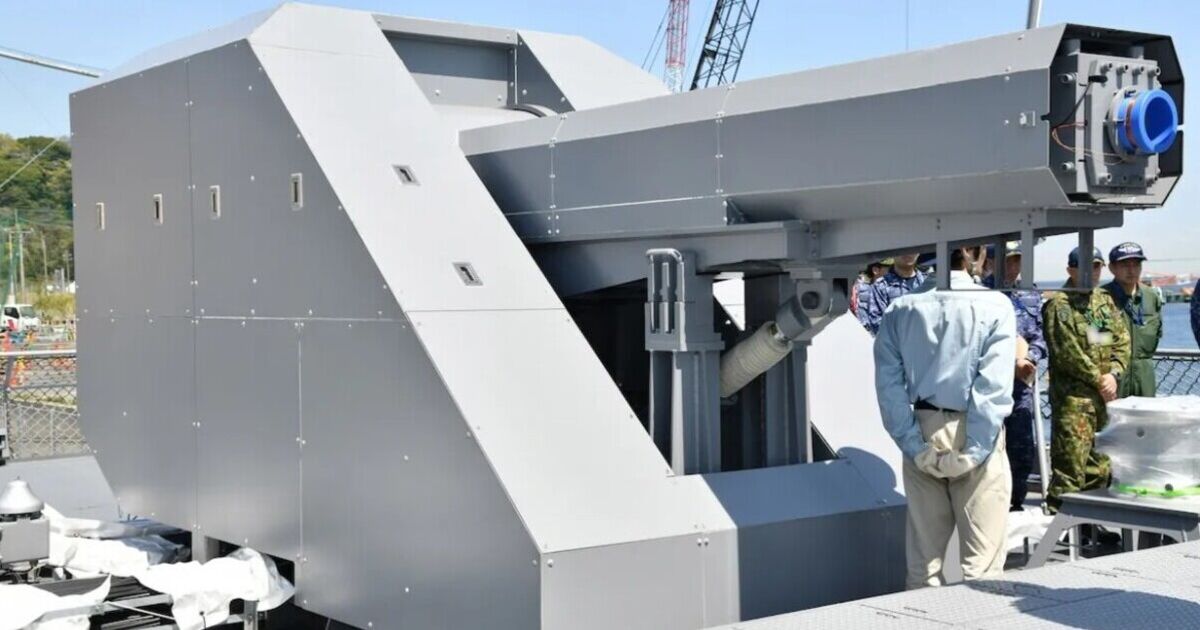Japan has unveiled a powerful new weapon capable of reaching speeds of 5,600mph. The cutting-edge railgun has been designed to intercept threats like hypersonic missiles and drone swarms, and could play an important role in future defence systems.
The electromagnetic weapon is being developed by Japan’s Acquisition, Technology & Logistics Agency (ATLA) and was recently tested aboard the Maritime Self-Defence Force’s JS Asuka warship. According to Interesting Engineering, the prototype weighs eight tonnes, has a six-metre-long barrel, and is capable of launching 320g steel projectiles at speeds of up to 2,500 metres per second – around Mach 7. It uses magnetic force instead of explosives, which means it’s a cheaper and safer alternative to conventional weapons.
ATLA’s goal is to eventually increase the system’s energy output from 5 megajoules (MJ) to 20MJ, allowing for greater range and effectiveness.
Officials say it could be deployed both on ships and on land to protect against a range of modern threats.
A spokesperson for the Japan Maritime Self-Defense Force (JMSDF) said: “In preparation for future combat, the Self Defence Fleet promotes research, development and earlier introduction of equipment necessary for the JMSDF in close collaboration with the ATLA and other organisations, as well as continues to build up its defence posture to protect Japanese citizens and the territorial waters.”
The railgun is part of Japan’s growing investment in next-generation defence technologies.
Research began in 2016, with live-fire testing starting in 2022.
According to The Defense Post, the Japanese government allocated around £56 million to the programme in 2022 alone.
Engineers have focused on overcoming the technical challenges that affected similar programmes in other countries.
In the United States, a navy railgun project was abandoned in 2021 after issues with barrel degradation.
But Japan’s design has made improvements to reduce wear and improve projectile stability at hypersonic speeds, as reported by Shephard Media.
The gun is designed to be scalable, and work is now underway to shrink the size of its charging and capacitor systems.
At present, the weapon requires four large containers for power and storage, but ATLA aims to cut the size in half by 2027. The plan is to build a complete operational version by 2026.

